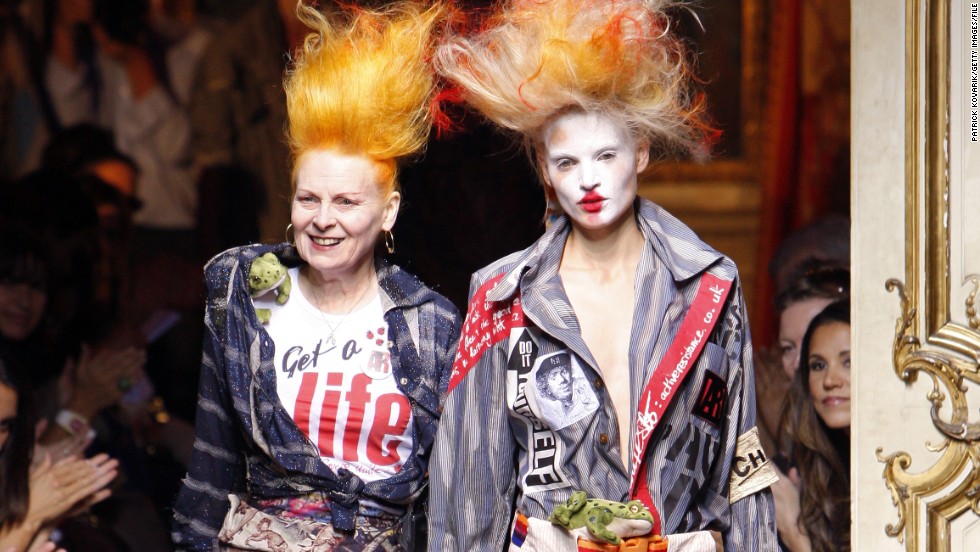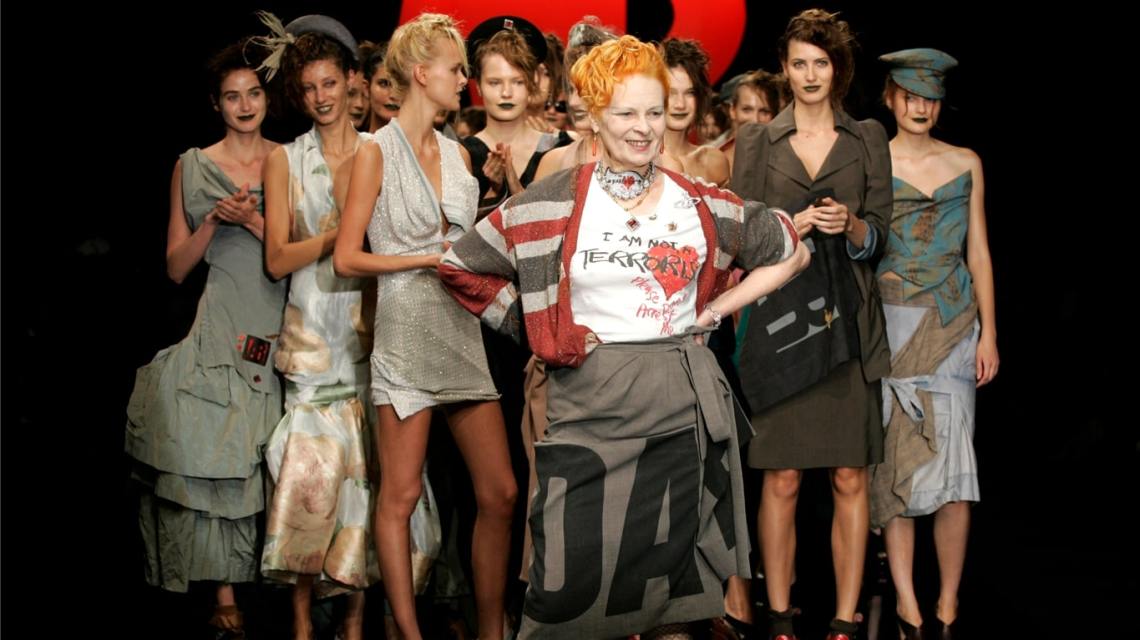// by Skye Humbert //
These days, punk seems like a foreign concept: synonymous with the louder than life haircuts, crazy couture and rock and roll of the 1970s, it now feels forgotten.
Punk is perhaps most fondly remembered by our parents’ twenties when they listened to the Sex Pistols on vinyl and gelled their hair as high as possible. It’s easy to forget that amidst the lifestyle of these ‘rebels’ was a punk ideology stretching over a huge political spectrum – from anti-authoritarianism to non-conformity and not ‘selling out’. But most crucially, this subversive form of artistic expression wanted to break the rules of normal society, show distaste with the system and grab people’s attention.
Although the punk aesthetic seems rather dated and unnecessary these days, we must wonder if the same ideology is present in the world of fashion today. Sure, we all have a pair of Dr. Martens kicking around, but is fashion at all revolutionary? Are people still reacting to the establishment through style?

The 2018 documentary ‘Westwood: Punk, Icon, Activist’ captures the remarkable life and career of the iconic female designer. Westwood has been noted as a pioneer of punk culture and new wave fashion – the documentary acts as a sort of history lesson about the punk movement in style. Although Westwood brought punk into the spotlight, the style that was so rooted in being shocking and anti-establishment became suddenly appropriated by mainstream fashion. “I went where I had to go,” she said in one of her interviews when asked why she joined the fashion weeks and various shows that seemed so against her moral values.
It’s easy to forget that amidst the lifestyle of these ‘rebels’ was a punk ideology stretching over a huge political spectrum – from anti-authoritarianism, non-conformity and not ‘selling out’.
Westwood must certainly be commended in following her heart when creating independent designs, unisex clothing and making statements about culture. But throughout the documentary, she too seems disillusioned with the culture she was trying to perpetuate saying; “we weren’t attacking the establishment, we were just part of the distraction”.
The documentary doesn’t glamorous the Vivienne Westwood brand, or Westwood herself, but shows an honest portrayal of the difficulties in running a company whilst retaining an artist’s integrity. At the same time, Ben Westwood, Vivienne’s son, has denounced the documentary, saying in an interview with Vogue that it “misses the real story… Let alone illustrating Vivienne’s worldview or her environmental work, the film does not even show her fashion properly… that film is on the cutting room floor.” Still, it endeavours to highlight her fight to remain the fiery, unaffected designer and channel her values into her clothing throughout her ongoing career.

But where is punk now? Part of punk culture’s anti-establishment mantra was to approach taboo topics such as sex and partying head on, often through pictures of naked breasts printed on T-shirts. Similarly, social media is littered with messages which promote body positivity. So, what would punk be today but another Instagram account? How do we react against the establishment when the establishment is so keen to support sexual liberation and fashion freedom? Are we just “part of the distraction”?
Brands like Forever 21 and Zara have capitalised on feminist slogans, slashing the words “dress to impress myself” and “girls can do anything” on plain shirts and selling them for profit. Did Vivienne Westwood do the same thing? Her punk aesthetic became a branded phenomenon- with backing from investors and producers, a Vivienne Westwood T-shirt sells for about £300. Is fashion really a feminist or punk statement if it’s the establishment selling it directly to you? Are any hot-shot designers rebelling or making any real statement when the industry seems saturated with appearing as ‘woke’? Classic fashion houses like Chanel and Dior have retreated into their ‘history’ by reinventing their older designs. Is being classic and conservative the new form of revolution?

The punk movement did everything it could to shock society. It got people talking about gender expression, and what was meant by the ‘norm’, and marked itself as a unique movement in literature, music and art. Though its appeal has staunchly diminished, we see its ideologies appearing in new ways every day. The idea of using fashion as a form of protest is now in trend – even if the brands we’re protesting try to jump on the bandwagon.
Though vast, varied and difficult to tackle, we cannot let commercial business capitalise on our own kind of punk. Fashion is a disjointed love affair between the industry and its consumers, a give and take between the individuals’ expression of self and what we’re told would look good on our bodies. It is a push and pull between buying into ‘what’s in’ and somehow trying to change perceptions of what fashion should be. Punk was akin to a bad-boy lover: never to be permanent but at the same time driving the industry to do better and dynamically shift our thinking. The kind of affair that shouldn’t be forgotten.
__
Featured images:
https://artscolumbia.org/performing-arts/music/punk-movement-reaction-stagnant-music-scene-70s-4750/
https://edition.cnn.com/2014/03/13/europe/gallery/vivienne-westwood/index.html
https://www.viviennewestwood.com/en/
https://www.motmag.com/fashion/2017/2/16/vivienne-westwood-punk-as-fk

